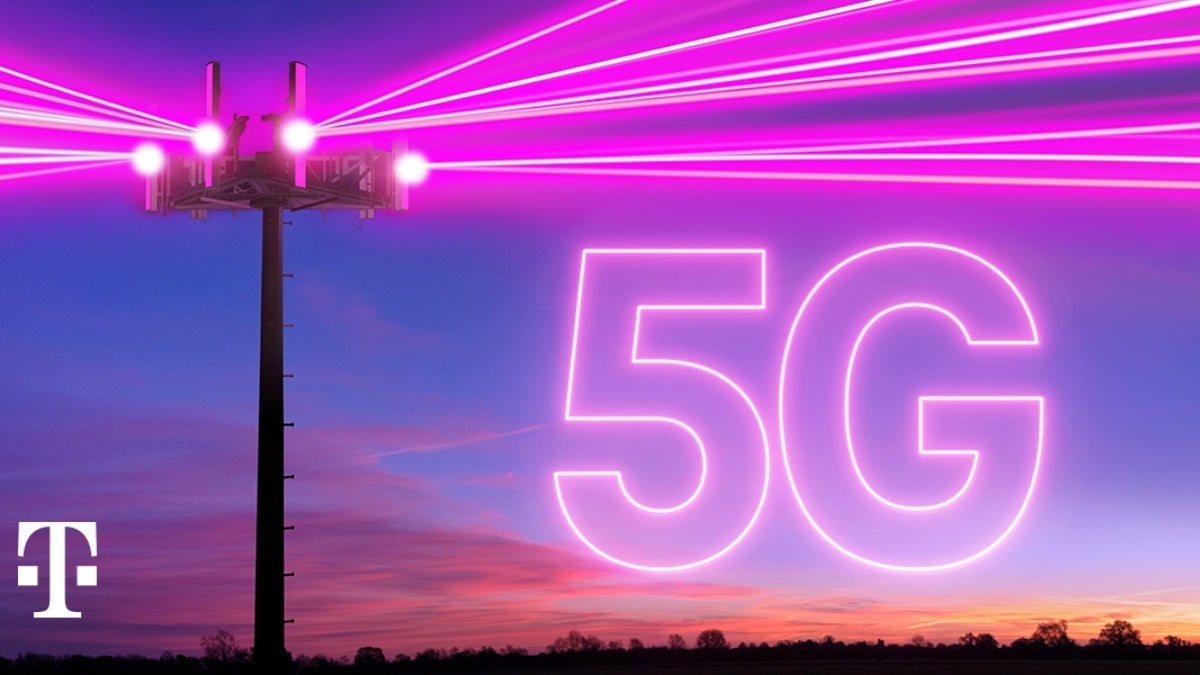Mid-band is called the Goldilocks of wireless because, while not as fast as mmWave (based on download data speed), it is 10x faster than low-band. Acquiring Sprint’s holdings of 2.5GHz mid-band spectrum was the actual reason why T-Mobile spent over $26 billion to acquire its rival. Using mid-band airwaves helped T-Mobile arguably become the 5G leader in the U.S. Verizon and AT&T eventually spent $68 billion on C-band spectrum which happens to be on the mid-band.

From the get-go, T-Mobile realized how important mid-band spectrum was going to be for 5G connectivity. | Image credit-T-Mobile
T-Mobile CEO Mike Sievert says, “I’ll … take you back to ’17 and ’18, when the world was absolutely convinced that 5G would equal rollouts of millimeter wave technologies all across this country. Millimeter wave technology was synonymous with 5G if you look back and remember. … And we looked at it and said, ‘that is not how 5G is going to be won and lost.'”
T-Mobile told the FCC that it has no plans to expand its mmWave coverage to areas other than small downtown locations. Again, that is due to the limited range of the signals. The FCC will take back possession of this spectrum and could make it available to other wireless providers that might want it.
“T-Mobile is using its 28 GHz band spectrum in venues like arenas and stadiums during widely attended events to ease network congestion. However, even in those scenarios, T-Mobile is unable to satisfy the performance requirements … because the propagation characteristics of the spectrum only allow for stable communications over limited distances where there is a clear line of sight between the transmit and receive locations.”-T-Mobile
This decision could have put T-Mobile in danger of having the FCC cancel all of its spectrum licenses since the carrier will not be able to meet FCC requirements that it provide mobile coverage to at least 40% of the population in the geographic areas covered by its mmWave licenses or 25% of the geographic region covered by the licenses. But the carrier told the FCC that it would be better if it redrew its spectrum licenses around its smaller coverage area and the FCC agreed. T-Mobile calls its smaller spectrum licenses “Retained Areas.”
T-Mobile met the FCC’s original requirements on 12 of its 28GHz (mmWave) licenses. In its remaining 18 markets it received permission from the FCC to redraw its licenses around a smaller coverage area. For example, in Los Angeles T-Mobile‘s 28GHz coverage ran from Burbank to Long Beach. But after T-Mobile redrew its license to match its mmWave coverage in downtown L.A.
Analysts are stunned because spectrum is typically seen as a valuable commodity by wireless providers yet T-Mobile is giving up this spectrum for free. High-band mmWave is less valuable than low-band and mid-band. For example, Verizon recently paid $1 billion for some of UScellular’s low-band airwaves. Considering that T-Mobile was the first of the big U.S. carriers to understand that 5G was best served by mid-band spectrum, no one should be criticizing the firm for its strategy when it comes to its spectrum licenses and holdings.
